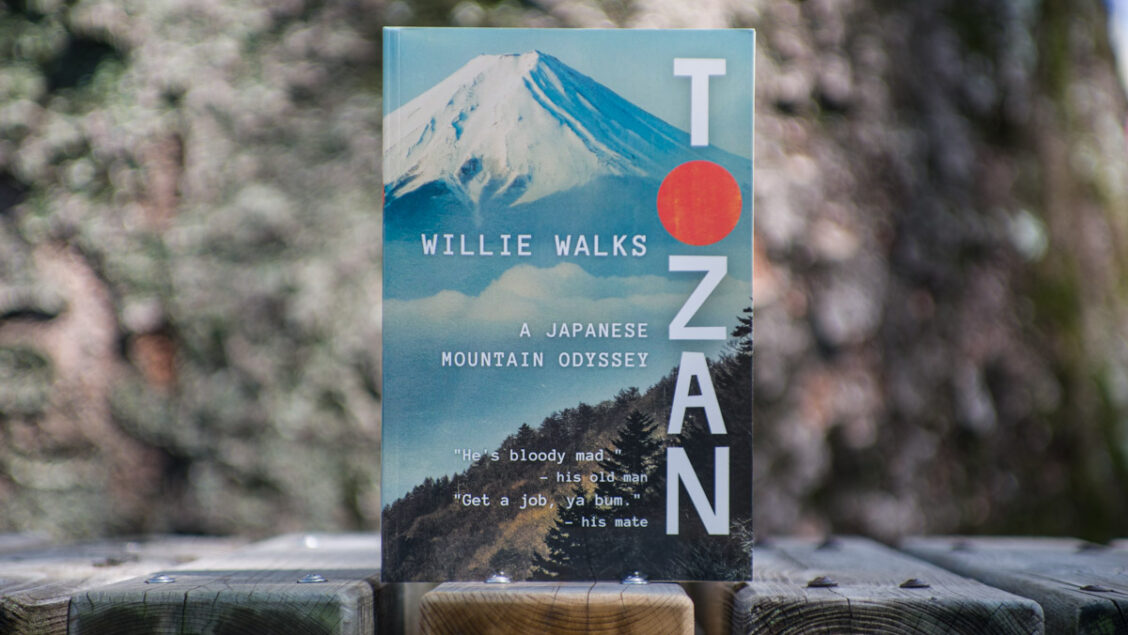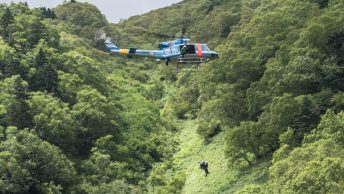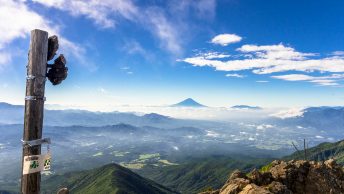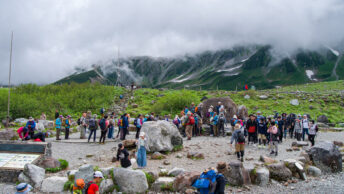One Man’s Quest for the 100 Best Mountains in Japan
It comes with much excitement and anticipation when a book about hiking in Japan is released, whether it’s a guidebook or a memoir. Such books are rare finds. As soon as I heard that William Banff’s long-awaited chronicle of his hiking escapades was finally at the printers, I made sure to be one of the first to grab a copy. Tozan: A Japanese Mountain Odyssey by Willie Walks, as he calls himself, joins a line of authors who, after completing the Nihon Hyakumeizan, or Japan’s 100 Famous Mountains, have written about their experiences. This tradition began with New Zealander Craig McLachlan and his Hyakumeizan: Japan’s 100 Mountain Challenge (2013) and continued more recently with California native Susan Spann’s Climb: Leaving Safe and Finding Strength on 100 Summits in Japan (2020).
What sets Tozan apart from its predecessors is its comprehensiveness, coming in at a hefty 566 pages. This is perhaps not surprising when considering that around five pages are dedicated to each mini-adventure. Adding a nice touch are the hand-drawn sketches that accompany each mountain. For those unfamiliar with the term, the Hyakumeizan refers to Japan’s 100 Famous Mountains, a list compiled by mountaineer and author Kyuya Fukada. The list was first published in his 1964 book, Nihon Hyakumeizan. These mountains spread across the entire country were selected based on their beauty, historical significance, and unique character. The Hyakumeizan have since become a popular challenge for hikers, including Emperor Naruhito during his formative years, with many aspiring to conquer all 100 peaks.
In the opening pages, we gain insight into the author’s motivations for undertaking this mountain challenge. Having spent half a decade in Japan, he admits to “dabbling in its delights, content to drift rudderless on a sea of all-you-can-drink booze,” a sentiment many newcomers to Japan can undoubtedly relate to. Willie’s epiphany comes after discovering Kyuya Fukada’s name in his Lonely Planet Hiking in Japan guidebook, inspiring him to hatch a plan to climb the Nihon Hyakumeizan by Christmas of that year. The problem was, he’d never actually pitched a tent in his life, but he could light a fire and knew which end of a sleeping bag to crawl into, which is at least some relief. With an omamori, or good luck charm, in hand courtesy of his Salsa Princess, and one mountain down—Ibuki-yama—he was on his way.
The first leg of this journeyman’s quest takes him to Hokkaido, but more snow than expected and a relentless mosquito infestation cuts short his visit. “Hokkaido will keep,” he resigns himself. The speed and efficiency with which he knocks off each peak is impressive. By the end of August 2007, he has already climbed 39—more than I’ve managed in my entire hiking career. However, he’ll have his work cut out for him to finish the 100 by year’s end. It should be said that many of these initial peaks are climbed in the midst of Japan’s midsummer heat and humidity, a sure mark of his dogged tenacity. I literally had beads of sweat running down my armpits just reading about it.
His reminiscences from his haul up Hira-ga-take are something to behold. Make no bones about it—it is without a doubt one of the toughest day hikes around, especially what he coins ‘The Nutbuster,’ an interminable spur on the way up. Having climbed this mountain under similarly oppressive summer conditions brought much of the vividness and suffering back to life. Interestingly, Willie and I shared the misfortune of camping at the same horsefly-infested hut, a good thirty minutes from the trailhead. En route, we’re introduced to a colourful cast of characters: a ‘madman’ claiming to have climbed the mountain before, a fella in absurdly short trousers who drinks from questionable water sources, and a middle-aged couple on the brink of giving up. It’s easy to imagine encountering similar personalities on any of these mountains.
On the way, we discover his dislike of gyoza—such people really do exist—along with the city it’s famed for, his fondness for M&M’s, adzuki-flavoured delights, and the odd Nepali feast. Willie masterfully interweaves these hundred mini-narratives with sardonic wit, often pulling no punches. Adhering to the tenets of political correctness isn’t one of the book’s strong points, though neither is it meant to be mean-spirited in any way. His signature Australian self-deprecating humour is a constant source of amusement, eliciting more chuckles than I care to count. On horseflies, he writes, “By the time the beeper started counting down the final few seconds, proboscises had speared like hot pokers into the meat of my back.” At a Wakkanai biker hostel, he describes a “mama-san with a voice as rough as a clapped-out Harley.” His keen eye for the nuances of human nature is evident on every page.
What truly makes Tozan a captivating page-turner is the driving force behind the protagonist himself. Based on the preamble, it’s safe to say William Banff was an unlikely candidate for such an arduous undertaking. His decision to trust his instincts, quit his job, and leave behind his life in Osaka, including loved ones, is truly inspiring. This book is a testament to his fortitude. It’s a fantastic read for those with a casual interest in Japan’s mountains and an indispensable resource for anyone planning their own Hyakumeizan challenge.
Tozan: A Japanese Mountain Odyssey
by Willie Walks
566 pages. Bozu Books. ¥3,025.
Publication date: July 29, 2024
Available for purchase here.







Great write up. I had no idea this was coming out. When you said the tenets of political correct tenets were not adhered to, I jumped to the bottom and clicked the link. Arriving in the mail tomorrow.
Neither did I until I got the heads-up from Willie. Good work–it’s a top read. Cheers.